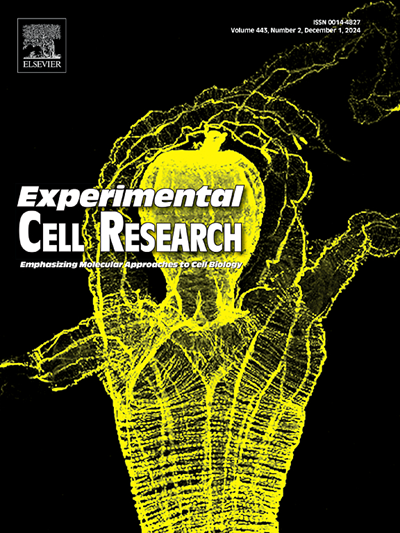MYG1 interacts with HSP90 to promote breast cancer progression through Wnt/β-catenin and Notch signaling pathways
IF 3.3
3区 生物学
Q3 CELL BIOLOGY
引用次数: 0
Abstract
Background
As an evolutionarily conserved gene involved in embryonic development, cell differentiation, and immune metabolism, MYG1 exhibits a dynamic expression pattern related to development in human and mouse embryonic tissues, especially upregulates in undifferentiated or pluripotent stem cells. However, MYG1 has been poorly studied in breast cancer and its functional mechanism still remains unclear.
Method
Immunohistochemistry and immunofluorescence were used to study MYG1 expression and localization in breast cancer. Lentivirus transfection combined with CCK8, colony formation, matrix gel experiment and breast fat pad tumor formation in nude mice were used for in vivo and in vitro functional assessment. GSEA enrichment analysis, immunofluorescence and Western blot were conducted to explore functional mechanism.
Result
MYG1 expression was upregulated in breast cancer and its higher expression correlated with a variety of clinicopathological characteristics indicating poor prognosis. In vitro and in vivo experiments showed that overexpression of MYG1 promoted breast cancer cells proliferation, migration, invasion and tumorigenesis, while downregulation of MYG1 had an opposite effect. Mechanistically, MYG1 interacted with HSP90 to significantly activate Wnt/β-catenin and Notch signaling pathways in breast cancer cells, thus promoting EMT, cell cycle process and breast cancer progression.
Conclusion
MYG1 is highly expressed in breast cancer and functions as an oncogene. Mechanistically, MYG1 interacts with HSP90 to accelerate EMT and cell cycle process by activating both Wnt/β-catenin and Notch signaling pathways.

求助全文
约1分钟内获得全文
求助全文
来源期刊

Experimental cell research
医学-细胞生物学
CiteScore
7.20
自引率
0.00%
发文量
295
审稿时长
30 days
期刊介绍:
Our scope includes but is not limited to areas such as: Chromosome biology; Chromatin and epigenetics; DNA repair; Gene regulation; Nuclear import-export; RNA processing; Non-coding RNAs; Organelle biology; The cytoskeleton; Intracellular trafficking; Cell-cell and cell-matrix interactions; Cell motility and migration; Cell proliferation; Cellular differentiation; Signal transduction; Programmed cell death.
 求助内容:
求助内容: 应助结果提醒方式:
应助结果提醒方式:


